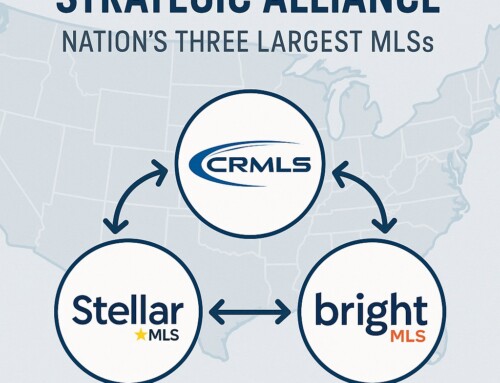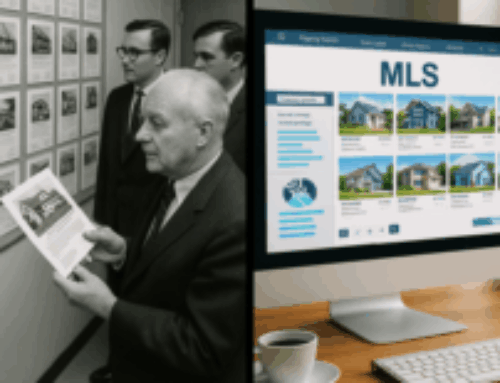Over the past few years the topic of regionalization and data sharing has been high on the list for most MLSs. During strategic planning sessions WAV Group facilitates this is always a major topic. At every real estate convention you attend you can find a panel on regionalization and data sharing issues. Even so, if you talk to 10 different people you may hear 5 different ideas on how to address these issues. Difference in opinion is a good thing, but what we see in our industry, at times, are parallel attempts to address the same issue by different individuals and organizations. We also see different technology approaches being used to solve the same problem. Looking at different technology approaches before selection is a good thing but implementing multiple approaches is rarely a good idea.
It is hard to argue that if multiple groups are taking multiple approaches, with multiple technologies to solve the same problem there is an inherent inefficiency. When you look at the fact that the same people are ultimately paying for these multiple processes, the brokers and agents, it seems to make even less sense.
Think of the different tracks we see being taken by different players in our industry.
- NAR is driving forward with their plans for a national property database, currently called the Realtors Property Resource. They say the intent it not to create a national MLS but certainly much of what they are doing appears to overlap with current MLS services. If this project really comes together it may be hard for it not to take on some or all aspects of a national MLS at some point in the future. We are not making a judgment on whether this is a good or bad thing, at this point, but there is no way it is not going to impact every MLS in the country if it comes about.
- In areas all around the country, large regional consolidation is taking place. This is not being done in conjunction with a national master plan. It is being done based on real, immediate needs of local markets. MLSs like MRIS, MRED, SoCal, and Mid Florida to name a few have expanded based on real market needs and the expansion of natural market areas. In areas like California, MLS leadership have broken down walls and are coming together on common platforms in many places where these natural selling areas have been redefined. These MLS changes are being driven by real member needs.
- Beyond these regional partnerships initiatives like CARETS in the southern California and Quatro in the north provide further access to their members beyond their own MLS boundaries. MLSs may not see the need to combine their MLSs and give up local control but recognize the wisdom in finding common ground to share data and it is working. These technology solutions allow the MLSs to maintain their MLSs while providing data access to broader areas. And, they do this without forcing their members to learn whole new systems.
- At the state level, we see various initiatives underway, such as the push for statewide regionalization by CAR. CAR is moving forward with a statewide regionalization project parallel with the local and regional efforts already underway by CAR members throughout the state. The calREDD project, as it is called, is a bold move that intends to be both the technology vendor platform as well as the MLS. Groups that join calREDD will no longer run their own MLS but will receive these services directly from calREDD. This may be an attractive option for some small MLSs that are struggling to make ends meet, especially if they are not near another larger MLS, but will likely not be that attractive to large regional MLSs that already have solid operations with data sharing initiatives in place. When you consider the fact that calREDD announced their intention to join CARETS in the near future it makes their joining even more unlikely
Is bigger always better?
Let’s start with the idea of a state or national database. Do these ideas really make sense? The answer is yes, and no. Yes, if the natural market area calls for it, and no, if it doesn’t.
When we hear people say that a state or national data base is going to save members money and create all of these great benefits for members we always listen to hear what the benefits are. We also listen and watch to see if anyone has done impact studies on what these initiatives will mean to the local MLS and the broker and agents they serve. To date, we have not seen any impact studies in advance of moving forward with the various projects. It appears to be more of a “ready, fire, aim” strategy. WAV Group has performed impact studies for MLSs asking these types of questions on their own, and it is clear, from our research, that the devil is in the details.
MLSs need to take a close look at what will be different in any of these proposed initiatives and determine whether it is really a benefit for their members and their market. If it is, great, jump on board. But we believe, doing a reasonable impact study first makes a lot of sense.
What do the members say?
Maybe the first step in this whole discussion should be to go to the brokers and agents around the country and ask them what they really need to be successful. We have seen numerous surveys ask a question or two on what the “right” sized MLS should be, but we have not seen any in-depth study asking brokers and agents detailed questions about the importance of these issues. Do the members see value in a national database? Do members across the country really want to go to statewide or larger MLSs? Would they still feel this way if they lose local control? What if they have to switch to different technology? What if it costs them more money? Doing regional focus groups combined with a well constructed national survey would go a long way to identify what the real estate professionals across the country really find important on this topic.
Will it save your MLS money?
Is it going to save your members a lot of money? That is hard to imagine. In an industry where MLS member technology prices have been pushed to ridiculously low levels how much will really be saved in the end? Certainly very small MLSs have built in inefficiencies and over time most will join larger neighbors to deal with these inefficiencies but the technology costs even for small MLSs are simply not that high.
There are also always going to be administration costs in any organization. Is a national or statewide going to cost less? Maybe it will, but there will certainly be tradeoffs in terms of local control. In an area where the natural market really warrants the MLS be statewide this is definitely worth the trade off, but again, look at it from a business perspective first.
What are the real benefits?
Now let’s look at this from another perspective, the value that the state, multi-state or national database will bring to the real estate community regardless of how it is put together. How real are the benefits? Will Bob and Sue Realtor in New England really receive value from being able to access that Lake Tahoe MLS listing? Consumers already have access to through sites like Realor.com, so it isn’t needed to solve that problem.
Will Broker/agent John down in Houston really benefit from those Buffalo, NY listings? There will certainly be value to the large real estate companies that want to draw data from multiple MLS areas because they cross these lines but isn’t that being addressed already at the local and regional level at least in large part?
Will agents in San Diego really need to see properties in Sacramento? Would they do it if they had to pay additional dollars for it?
Who should be in control?
What about the unavoidable bureaucracy and politics that has to come along with a database or super MLS that is going to serve the state, or country and loss of local control this has to cause? Is the ability to access data across the country worth the loss of local market control? Can you have both? Will the entity that must be created to run any mega system be more effective in addressing all local market needs than local regionals based on natural and “real” markets? Isn’t real estate still a local business?
Even if the industry wants a “national” solution is NAR or a state association the right group to lead these charges or should it be run by an association of MLSs? Who is more likely to drive it successfully based on solid business principles instead of politics and personal agenda. What the industry doesn’t need is more politics and how can it be anything but in the direction it is currently moving in?
Will this drive innovation or stifle it?
The next question relates to technology and innovation. Our vendor market is incredibly dynamic at all levels from the MLS to the broker and agent and we see innovation at every conference we attend. Is it really a good idea to put everyone on a common technology platform? Do the market needs really warrant that?
What will be the true impact of these initiatives?
The truth is, we don’t know! Has a true impact study been done in any of the situations mentioned? Has NAR or regional MLSs or state associations really spent the time to project 3, 5 or 10 years down the road to project in any detail how they see events unfolding in terms of both the positive and negative impacts on these industry initiatives? How will local MLSs be affected? What are the real benefits that will materialize? What will member costs be? What will be the impact on their technology vendors and the agreements they currently have in place? What will the cost of re-educating the members be with any change? Will the value received outweigh these costs? Will these initiatives, if they fail, open the door for the 3rd party vendors and further reduce Realtors® credibility in consumer’s eyes. What about the regional efforts taking place? Is this all wasted money? What is the real cost to members today as a result of multiple parallel efforts trying to address the same issue?
Conclusions
In a perfect world and a perfect industry our industry leaders would find a way to talk before they walk! Personal egos and agendas would be put aside in the interest of the members and also the consumers. There would be serious study and discussion at the national, state and local levels to find a common strategy that would let the local markets address their immediate needs while finding agreement on a the larger strategy. Or, if there was not agreement on a larger strategy maybe the smart thing to do is to wait until there is.
Why can’t there national and state strategies that take into account local needs, contracts and market realities? Why can’t strategies be created that include impact studies and transition plans in advance of spending millions on the actual implementation before all the problems are even clear?
In a perfect world local, regional, state and national projects would not occur simultaneously addressing the same issues without those efforts being a part of a master plan that the individual groups agreed on. In a perfect world, local and regional efforts could occur at the same time as a state or national project but it would be done in a way that optimized resources and minimized cost. It would be done with a clear vision of what the impact of the overall process would have initially and long term on all of the participating parties. This vision of course would not be “crystal” clear or absolute, it never can be, but it certainly would be a lot clearer than any vision that has been shared today about how all of these separate initiatives will ultimately come together.
What would this whole process look like if there was a National Association of MLSs driving it? Does it make sense for the businesses and members most affected by these initiatives to lead the charge? It could certainly make for an interesting panel discussion!




